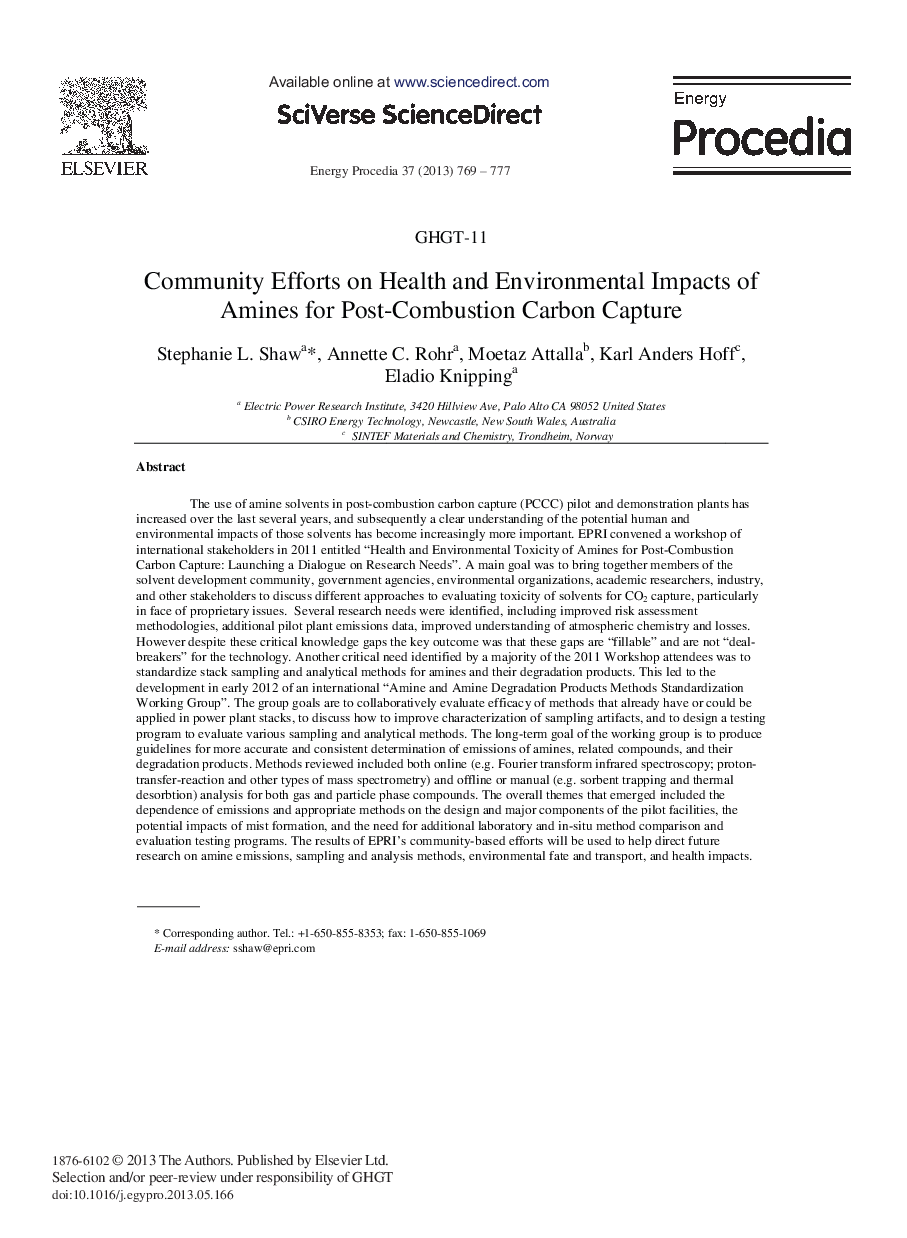| کد مقاله | کد نشریه | سال انتشار | مقاله انگلیسی | نسخه تمام متن |
|---|---|---|---|---|
| 1512879 | 1511198 | 2013 | 9 صفحه PDF | دانلود رایگان |

The use of amine solvents in post-combustion carbon capture (PCCC) pilot and demonstration plants has increased over the last several years, and subsequently a clear understanding of the potential human and environmental impacts of those solvents has become increasingly more important. EPRI convened a workshop of international stakeholders in 2011 entitled “Health and Environmental Toxicity of Amines for Post-Combustion Carbon Capture: Launching a Dialogue on Research Needs”. A main goal was to bring together members of the solvent development community, government agencies, environmental organizations, academic researchers, industry, and other stakeholders to discuss different approaches to evaluating toxicity of solvents for CO2 capture, particularly in face of proprietary issues. Several research needs were identified, including improved risk assessment methodologies, additional pilot plant emissions data, improved understanding of atmospheric chemistry and losses. However despite these critical knowledge gaps the key outcome was that these gaps are “fillable” and are not “deal- breakers” for the technology. Another critical need identified by a majority of the 2011 Workshop attendees was to standardize stack sampling and analytical methods for amines and their degradation products. This led to the development in early 2012 of an international “Amine and Amine Degradation Products Methods Standardization Working Group”. The group goals are to collaboratively evaluate efficacy of methods that already have or could be applied in power plant stacks, to discuss how to improve characterization of sampling artifacts, and to design a testing program to evaluate various sampling and analytical methods. The long-term goal of the working group is to produce guidelines for more accurate and consistent determination of emissions of amines, related compounds, and their degradation products. Methods reviewed included both online (e.g. Fourier transform infrared spectroscopy; proton- transfer-reaction and other types of mass spectrometry) and offline or manual (e.g. sorbent trapping and thermal desorbtion) analysis for both gas and particle phase compounds. The overall themes that emerged included the dependence of emissions and appropriate methods on the design and major components of the pilot facilities, the potential impacts of mist formation, and the need for additional laboratory and in-situ method comparison and evaluation testing programs. The results of EPRI's community-based efforts will be used to help direct future research on amine emissions, sampling and analysis methods, environmental fate and transport, and health impacts.
Journal: Energy Procedia - Volume 37, 2013, Pages 769-777